How to Train Clients With Emphysema (Step-by-Step Guide)
Mastering how to train clients with emphysema can provide a rewarding addition to your personal training business. It is critical, however, to possess the correct knowledge and tools to safely and effectively train clients with this lung condition. Leveraging certain aspects of personal training software can be immensely beneficial. Learn how to train clients with emphysema and explore the tools you’ll need with this step-by-step guide.
- Training clients with emphysema requires careful program design focused on improving lung function and overall fitness, while not overexerting the client.
- Most clients with emphysema will need low-impact, controlled exercises, with a focus on breathing techniques and cardiovascular improvement.
- Using workout and assessment software can help prioritize your client’s safety, and guide them towards their fitness goals with fewer complications.
Entering the realm of training special populations, like clients with emphysema, can offer personal trainers a fulfilling way to diversify their fitness businesses.

To train clients with emphysema, it’s crucial to be well-versed in the condition and to have the necessary tools for effective and safe training; here is where personal training software proves its worth. By harnessing the features that the best online personal training software offers, you can train clients with emphysema in a manner that is compatible with their condition, not against it.
To experience the leading personal training software from Exercise.com, book a demo now!
Understanding Emphysema: Causes, Symptoms, and Impact on Physical Activity
Emphysema is a chronic lung disease that affects millions of individuals worldwide. It is characterized by the destruction of the air sacs in the lungs, leading to difficulty in breathing. For fitness professionals, understanding emphysema and its impact on physical activity is essential in creating safe and effective training plans for clients with this condition.
Emphysema is primarily caused by long-term exposure to irritants, such as cigarette smoke or air pollution. Over time, these irritants cause inflammation and damage to the alveoli, the tiny air sacs in the lungs responsible for exchanging oxygen and carbon dioxide. As a result, the lungs lose their elasticity, making it harder to exhale air.
Common symptoms of emphysema include shortness of breath, wheezing, chronic cough, fatigue, and chest tightness. These symptoms can significantly impact an individual’s ability to engage in physical activity, leading to reduced fitness levels and overall quality of life.
In addition to the physical limitations caused by emphysema, individuals with this condition may also experience emotional and psychological challenges. The difficulty in breathing and reduced ability to participate in physical activities can lead to feelings of frustration, anxiety, and depression. It is important for individuals with emphysema to seek support from healthcare professionals, as well as engage in activities that promote mental well-being, such as meditation or counseling.
The Importance of Exercise for Clients With Emphysema
Exercise plays a crucial role in managing emphysema and improving overall lung function. Regular physical activity can help strengthen the respiratory muscles, improve cardiovascular endurance, and enhance the body’s ability to use oxygen efficiently.
Furthermore, exercise helps increase lung capacity and reduces breathlessness, allowing individuals with emphysema to perform daily activities with greater ease. It also promotes better mental health, reduces stress, and increases overall well-being.
In addition to these benefits, exercise can also help prevent complications associated with emphysema. Regular physical activity can help reduce the risk of developing respiratory infections, such as pneumonia, by improving the immune system’s ability to fight off pathogens. It can also help prevent muscle wasting and maintain a healthy body weight, which is important for overall health and managing symptoms of emphysema.
Creating a Safe and Effective Training Plan for Clients With Emphysema
Developing a training plan for clients with emphysema requires careful consideration of their individual needs and limitations. It is essential to start with a thorough assessment of their medical history, current fitness level, and any contraindications or precautions related to their condition.
Working closely with healthcare professionals, such as pulmonologists or respiratory therapists, can provide valuable insight into the specific requirements and limitations of clients with emphysema. This collaboration ensures that the training plan is tailored to each client’s unique situation and minimizes the risk of complications.
One important aspect to consider when creating a training plan for clients with emphysema is the selection of appropriate exercises. Low-impact activities, such as walking, swimming, or cycling, are generally well-tolerated and can help improve cardiovascular fitness without putting excessive strain on the respiratory system.
In addition to exercise selection, it is crucial to monitor clients’ symptoms and adjust the training plan accordingly. Emphysema is a progressive condition, and clients may experience fluctuations in their lung function over time. Regular assessments and modifications to the training plan can help ensure that clients are exercising at an appropriate intensity and avoiding any potential exacerbations of their symptoms.
Assessing the Individual Needs and Limitations of Clients With Emphysema
When working with clients with emphysema, it is crucial to consider their individual needs and limitations. Assessing their fitness level, lung function, and any coexisting medical conditions allows for the development of an appropriate and personalized training plan.
Conducting baseline tests, such as spirometry to measure lung capacity or a six-minute walk test to assess endurance, can provide valuable information. These tests help determine the client’s current capabilities and set realistic goals for their training program.
In addition to assessing fitness level and lung function, it is also important to consider the client’s lifestyle and daily activities. Understanding their daily routines and any physical limitations they may have can help tailor the training program to their specific needs.
Breathing Techniques for Clients With Emphysema During Exercise
Breathing techniques play a vital role in managing breathlessness and improving exercise tolerance for individuals with emphysema. Teaching clients diaphragmatic breathing, pursed-lip breathing, and other relaxation techniques can help them optimize their lung function during physical activity.
Deep breathing exercises, such as inhaling deeply through the nose and exhaling slowly through pursed lips, help promote better oxygen exchange and reduce the feeling of breathlessness. Encouraging clients to practice these techniques regularly can enhance their exercise performance and overall well-being.
In addition to diaphragmatic breathing and pursed-lip breathing, another effective breathing technique for clients with emphysema during exercise is paced breathing. Paced breathing involves taking slow, controlled breaths in and out, matching the rhythm of the exercise. This technique helps clients maintain a steady breathing pattern and prevents rapid, shallow breathing that can lead to breathlessness.
It is important for clients with emphysema to be aware of their breathing patterns during exercise. Monitoring their breathing rate and depth can help them identify any signs of breathlessness or fatigue. By practicing mindfulness and focusing on their breath, clients can better regulate their breathing and adjust their exercise intensity accordingly.
Choosing the Right Types of Exercise for Clients With Emphysema
When selecting exercises for clients with emphysema, it is essential to focus on low-impact activities that improve cardiovascular endurance and strengthen the respiratory muscles without causing excessive strain on the lungs.
Walking, cycling, swimming, and using the elliptical machine are all excellent choices for clients with emphysema. These exercises are gentle on the joints, can be modified for various fitness levels, and can be performed indoors or outdoors depending on the client’s preference and environmental conditions.
In addition to these low-impact exercises, it is also important to incorporate stretching and flexibility exercises into the workout routine for clients with emphysema. Stretching exercises help improve range of motion, reduce muscle stiffness, and enhance overall mobility. These exercises can include gentle stretches for the upper and lower body, such as shoulder rolls, neck stretches, and leg stretches.
Incorporating Cardiovascular Training into the Workout Routine for Clients With Emphysema
Cardiovascular training is a key component of any exercise program for clients with emphysema. Regular aerobic exercise helps improve the efficiency of the cardiovascular system, increasing the body’s ability to deliver oxygen to the working muscles.
Interval training, wherein short bursts of higher-intensity exercise are alternated with periods of lower-intensity exercise, can be beneficial for clients with emphysema. It allows for challenging workouts while still providing adequate rest and recovery periods.
In addition to cardiovascular training, it is important to incorporate strength training exercises into the workout routine for clients with emphysema. Strength training helps improve muscle strength and endurance, which can enhance overall physical function and reduce the effort required for daily activities.
Furthermore, it is crucial to monitor the intensity of the cardiovascular training sessions for clients with emphysema. Gradually increasing the intensity and duration of the workouts can help improve cardiovascular fitness without overwhelming the respiratory system. Regular monitoring of heart rate and oxygen saturation levels can provide valuable feedback on the client’s tolerance and progress.
Building Strength and Endurance Safely for Clients With Emphysema
Strength training is an essential part of improving overall fitness and functional capacity for clients with emphysema. Specific exercises that target the major muscle groups, such as resistance training or using resistance bands, can help improve strength and endurance.
It is crucial to start with light weights or resistance and gradually progress as the client’s fitness level improves. Recognize signs of fatigue or breathlessness during strength training sessions and adjust the intensity or duration accordingly to ensure safety and prevent overexertion.
In addition to strength training, cardiovascular exercise is also important for clients with emphysema. Engaging in activities such as walking, swimming, or cycling can help improve cardiovascular fitness and endurance. It is recommended to start with low-impact exercises and gradually increase the intensity and duration as tolerated.
Furthermore, proper breathing techniques should be emphasized during both strength training and cardiovascular exercises. Encourage clients to practice diaphragmatic breathing, which involves deep inhalation and exhalation using the diaphragm. This can help improve lung function and reduce shortness of breath during physical activity.
Understanding Medications and Their Effects on Exercise Performance in Clients With Emphysema
Many individuals with emphysema rely on medications to manage their symptoms and improve their lung function. As a fitness professional, it is essential to have a basic understanding of these medications and their potential effects on exercise performance.
Bronchodilators, such as short-acting or long-acting inhalers, are commonly prescribed to individuals with emphysema. These medications help open up the airways, allowing for easier breathing during exercise. However, some individuals may experience side effects such as increased heart rate or tremors.
Monitoring Heart Rate and Oxygen Levels During Exercise Sessions for Clients With Emphysema
Monitoring heart rate and oxygen levels during exercise is crucial for clients with emphysema. It helps ensure that the workout intensity is appropriate and does not exceed the client’s capabilities or put their health at risk.
Using a heart rate monitor or assessing the perceived exertion level, such as the Borg Rating of Perceived Exertion scale, can provide valuable feedback during exercise sessions. Additionally, portable pulse oximeters can be used to measure oxygen saturation levels, ensuring that the client maintains adequate oxygenation during exercise.
Adjusting Intensity and Duration of Workouts Based on Client’s Progress and Response to Exercise
As with any training program, it is crucial to regularly assess the client’s progress and adjust the intensity and duration of workouts accordingly. This allows for gradual improvements in fitness levels while minimizing the risk of overexertion or injury.
Encourage clients to keep track of their exercise sessions, noting any changes in symptoms, breathlessness, or overall well-being. By monitoring and adjusting the training plan based on these observations, clients can make steady progress and achieve their health and fitness goals.
Developing a Supportive Environment and Encouraging Self-Care for Clients With Emphysema
Creating a supportive environment is essential when working with clients with emphysema. Educate them about the benefits of exercise, the importance of self-care, and provide ongoing motivation and support throughout their fitness journey.
Encourage clients to listen to their bodies and take breaks when needed. It is essential for them to recognize their limitations and not push themselves too hard. Proper hydration, a balanced diet, and adequate rest are also essential components of self-care for clients with emphysema.
Tips for Managing Breathlessness and Anxiety During Exercise for Clients With Emphysema
Breathlessness and anxiety are common challenges experienced by individuals with emphysema during exercise. Incorporating techniques to manage and reduce these symptoms can significantly enhance the client’s ability to engage in physical activity.
Encourage clients to practice relaxation techniques, such as meditation or deep breathing exercises, before and during exercise to reduce anxiety. Breaking exercises into shorter, more manageable bouts can also help manage breathlessness by allowing for rest and recovery during workouts.
Promoting Overall Health and Well-being through Lifestyle Changes in Clients With Emphysema
Training clients with emphysema goes beyond exercise. Promoting overall health and well-being requires addressing lifestyle factors that can impact the condition.
Encourage clients to quit smoking if they are smokers and avoid environments with secondhand smoke or other lung irritants. Emphasize the importance of maintaining a healthy weight, eating a balanced diet, and following any additional recommendations from their healthcare providers.
Collaboration with Healthcare Professionals in Training Clients with Emphysema
Collaboration with healthcare professionals, such as pulmonologists, respiratory therapists, or primary care physicians, is essential when training clients with emphysema. Regular communication and coordination ensure that the training program aligns with the client’s medical management plan and maximizes their overall health outcomes.
Healthcare professionals can provide valuable insights into the client’s medical condition, specific limitations, and medications. This collaboration allows for a comprehensive approach to training clients with emphysema and ensures their safety and well-being throughout the process.
Training clients with emphysema requires a comprehensive and individualized approach. By understanding the causes and symptoms of emphysema, tailoring exercise plans to meet the specific needs and limitations of clients, and promoting overall health and well-being, fitness professionals can make a significant positive impact on their clients’ lives. Collaboration with healthcare professionals and ongoing support and encouragement can empower clients with emphysema to achieve their fitness goals and improve their overall quality of life.
What is the best exercise for someone with emphysema?
Pulmonary rehabilitation, which typically includes exercises like walking or cycling, strength training, and flexibility exercises, is often recommended for individuals with emphysema. Breathing exercises, such as pursed-lip breathing and diaphragmatic breathing, can also be beneficial as they can help improve lung capacity.
Will exercise help with emphysema?
Yes, exercise can indeed help with emphysema. It improves cardiovascular fitness, muscle strength, and endurance, helping individuals better carry out daily activities. It can also improve shortness of breath, quality of life, and overall health status.
Why would regular exercise be recommended for someone with emphysema?
Regular exercise is recommended for individuals with emphysema because it helps strengthen the muscles that aid in breathing and improve overall cardiovascular function. Additionally, it helps enhance energy levels, reduce feelings of breathlessness, and improve physical endurance, making daily tasks easier.
Why does a person with emphysema finds it difficult to exercise?
A person with emphysema may find it difficult to exercise because of shortness of breath and reduced lung capacity. The disease damages the alveoli (air sacs) in the lungs, making it harder to get oxygen into the bloodstream and thus increasing the effort required to breathe, especially during physical activity.
What exercises should COPD patients avoid?
COPD patients should generally avoid exercises that cause significant shortness of breath or any physical discomfort. High-intensity exercises or activities at high altitudes can often exacerbate symptoms.
Does walking help emphysema?
Yes, walking is often recommended as a low-impact aerobic exercise that can improve cardiovascular health, muscle strength, and endurance, thereby helping to alleviate some symptoms of emphysema.
What exercises strengthen the lungs?
Exercises like deep breathing, diaphragmatic breathing, pursed-lip breathing, and the Buteyko breathing method can strengthen the lungs. Aerobic exercises such as walking, cycling, and swimming can also help improve overall lung capacity.
What exercises help for pulmonary rehabilitation?
Pulmonary rehabilitation programs often include a combination of aerobic exercises like walking or cycling, strength training exercises, and breathing exercises. The exact exercises will depend on the individual’s current health status and should be guided by a healthcare professional.
What is the best way to manage emphysema?
The best way to manage emphysema involves a combination of medications (like bronchodilators, inhaled steroids, and supplemental oxygen), pulmonary rehabilitation, regular exercise, a healthy diet, and avoiding lung irritants like smoke and air pollution. Regular check-ups with a healthcare provider are also crucial for managing the disease effectively.
How does emphysema affect exercise ability?
Emphysema affects the exercise ability by causing shortness of breath, reduced energy levels, and muscle weakness due to lower oxygen levels in the blood. This can make it challenging for individuals with emphysema to perform physical activities, including exercise. However, with appropriate management strategies, including graded exercise programs, individuals can improve their exercise tolerance and quality of life.
Use the Best Personal Training Software to Offer a Stellar Client Experience
Training clients with dementia requires a comprehensive and tailored approach. See how Exercise.com can help.

To learn more about how Exercise.com can help you run your fitness business, book a demo now!
Creating Training Plans for Clients with Emphysema
Here’s how you can help your clients accomplish their training goals by using workout plan creator software to create workout plans, run fitness challenges, offer online workout groups, message clients, and more, all from your very own custom branded fitness apps.
Exercise.com stands out as an all-in-one fitness business management software with comprehensive workout plan sales capabilities. The robust member management, billing & invoicing, and unique fitness assessment tools offer a one-stop solution for fitness business needs. Here’s just some of what you can do with the Exercise.com platform:
Engage with clients via automations.
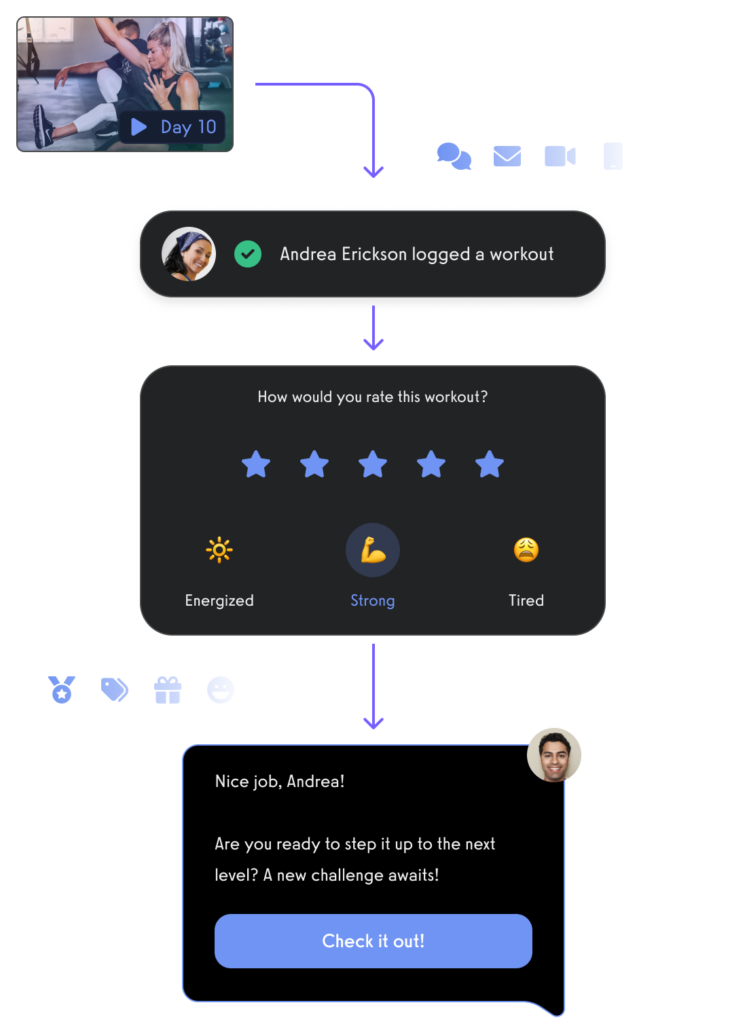
Manage leads with a fitness CRM.
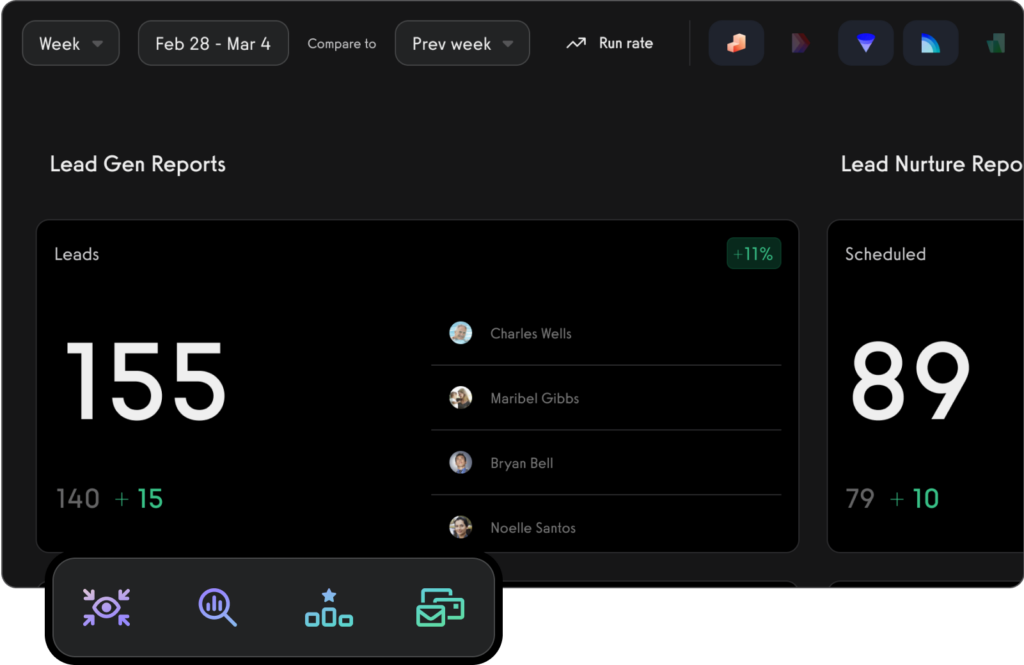
Create and send fitness assessments with ease.
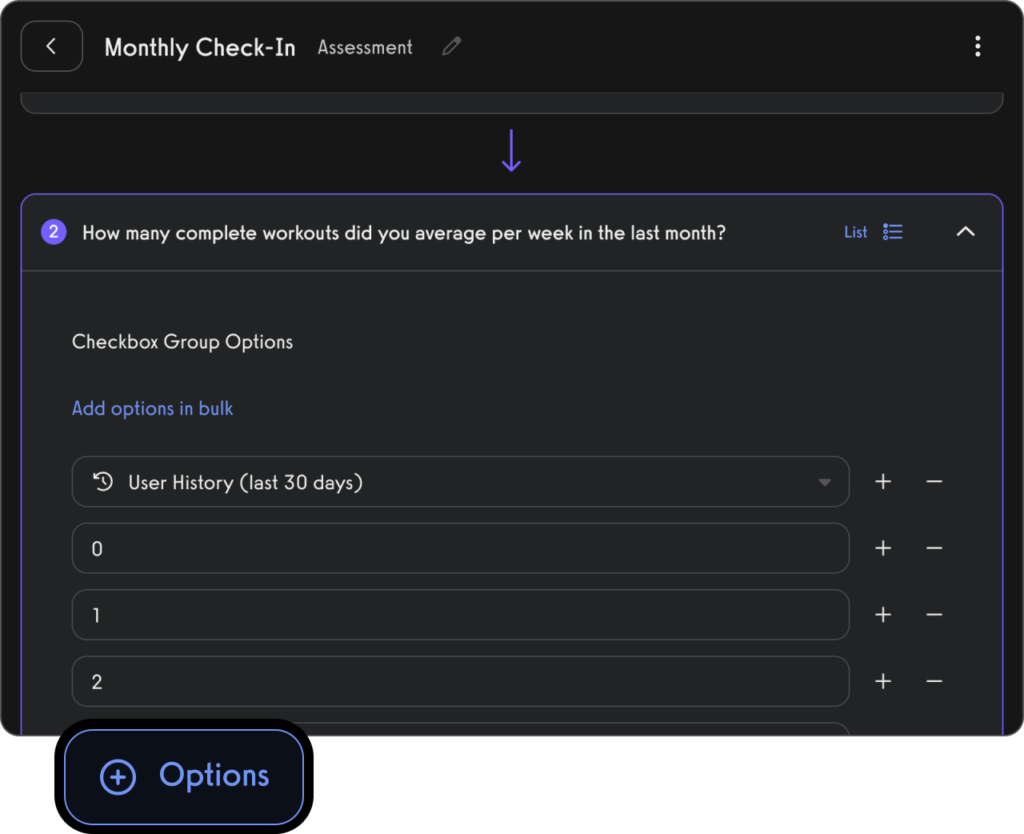
Use fitness habit tracking to inspire and motivate personal training clients (in-person and remote).

Use fitness progress photos to engage with clients.
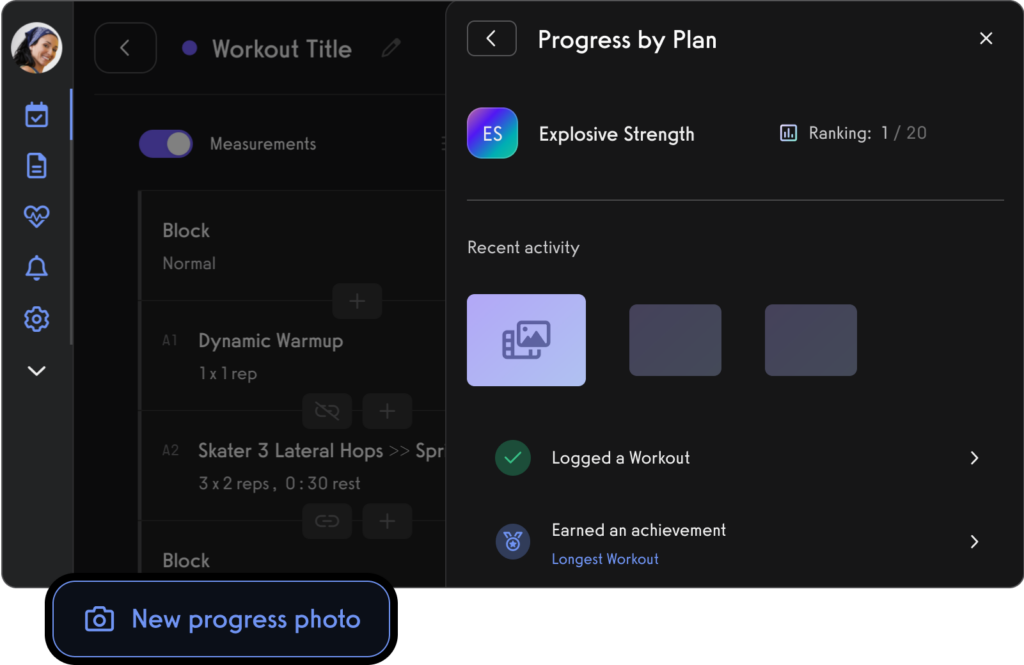
Use fitness leaderboards to track performance and inspire healthy competition.
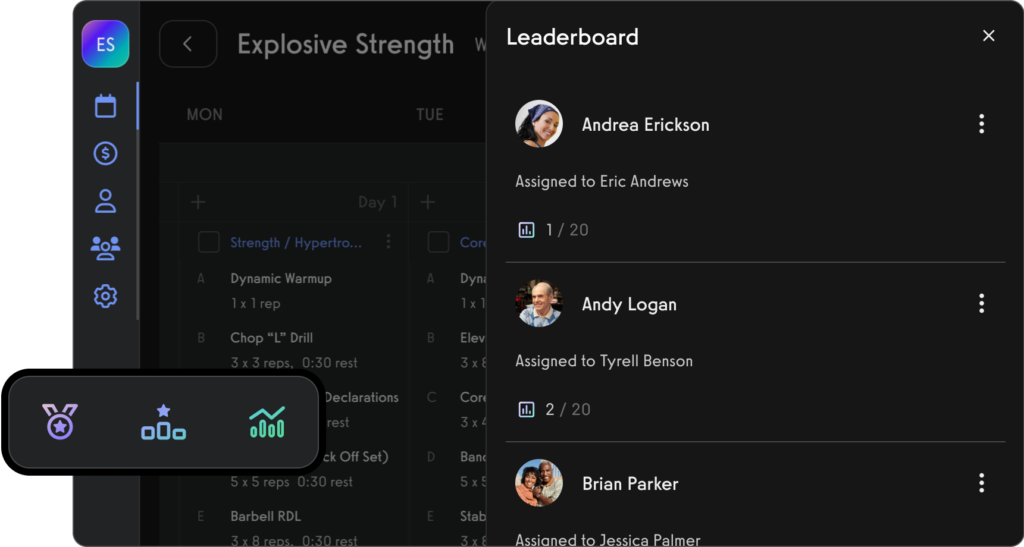
Use the exercise demonstration video library or create your own custom exercise demonstration videos.

Create workout plans for parents and dependents, teams and more.

Manage personal training clients with ease.

Book appointments for clients (Read More: Best Gym Booking Software)

Create classes and fitness groups

Manage fitness challenges (Read More: 100+ Fitness Challenge Ideas)
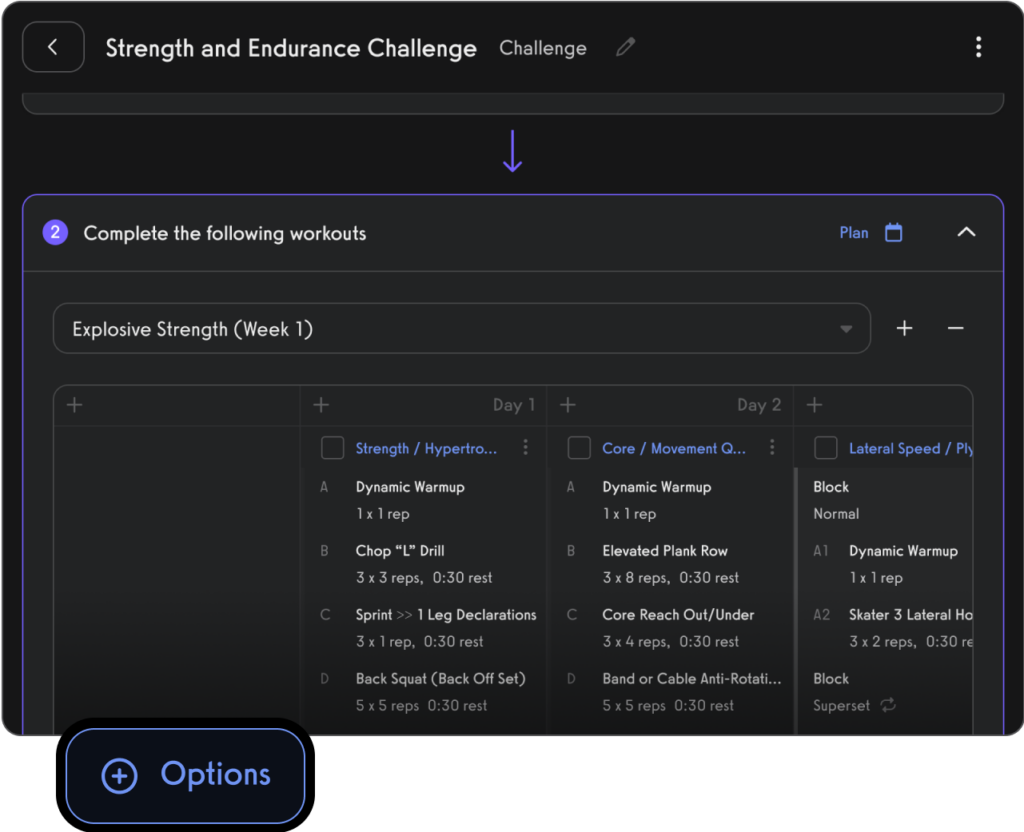
Process payments for open gym, classes, and personal training.

Communicate with gym members, athletes, team members, personal training clients, class members, parents, and dependents via SMS, email, and in-app push notification.
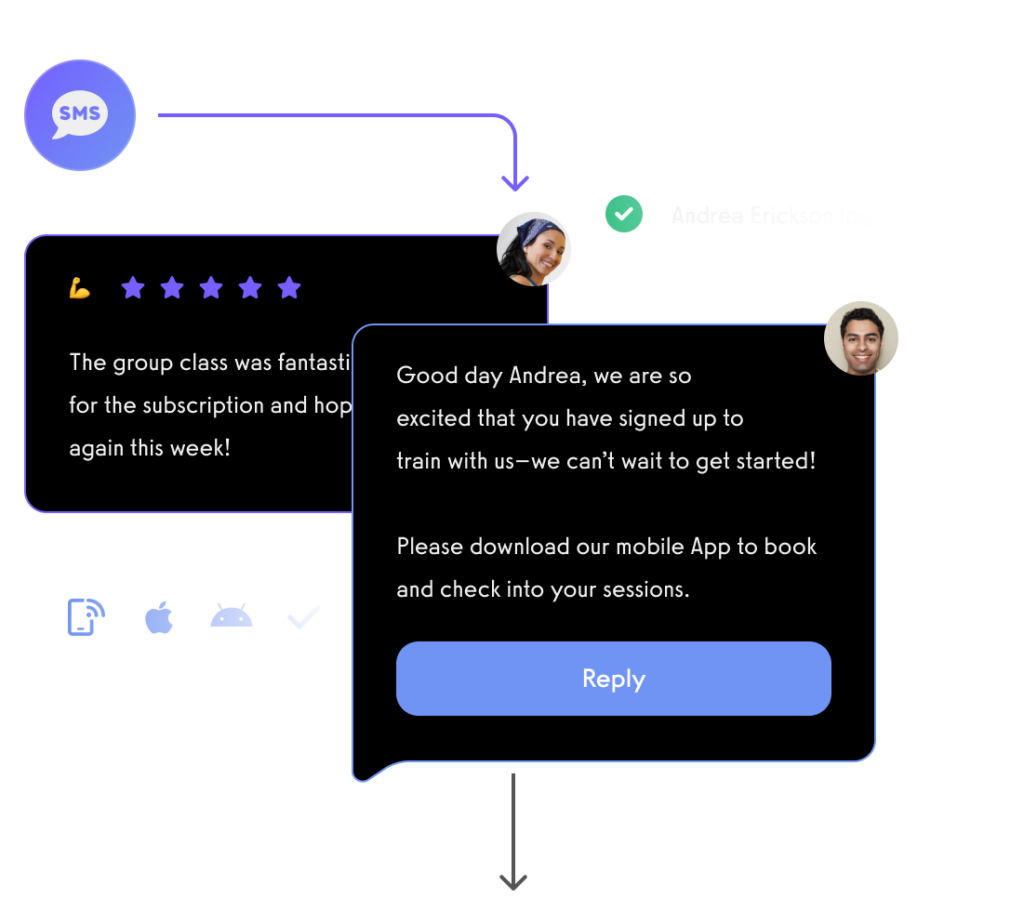
View performance over time, track personal records, and other fitness stats with performance reporting dashboards.
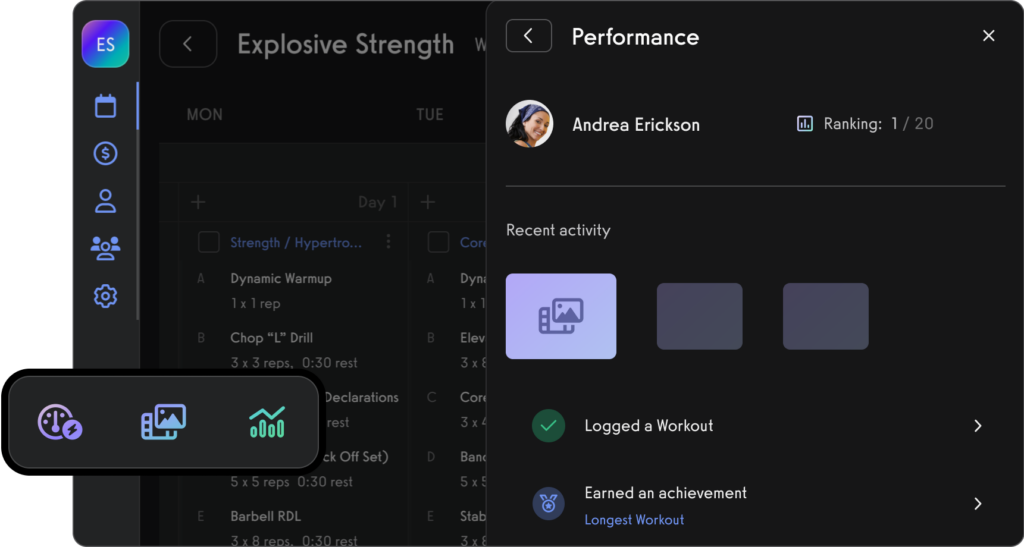
And of course, view all of your fitness business reports easily too.

All from your custom-branded fitness apps (Read More: Best Gym Mobile Fitness Apps Software)


Want to learn how your fitness business can take it to the next level? Get a demo now!









